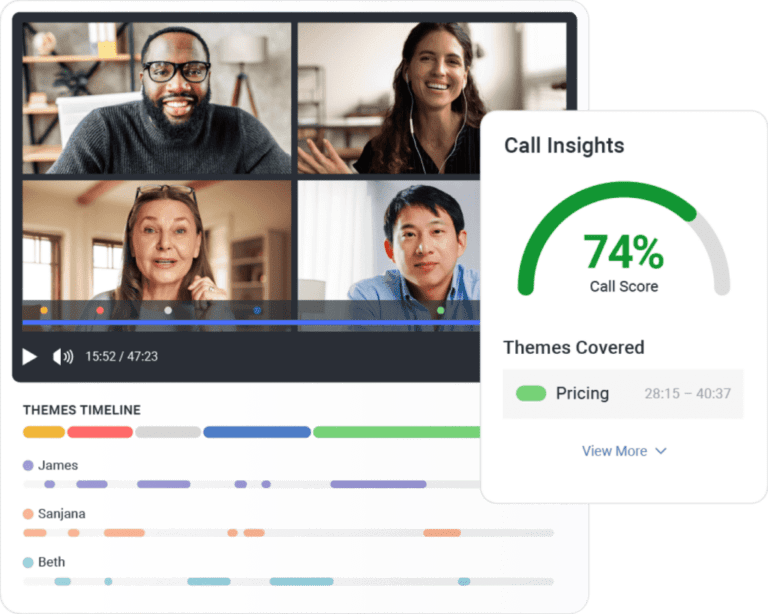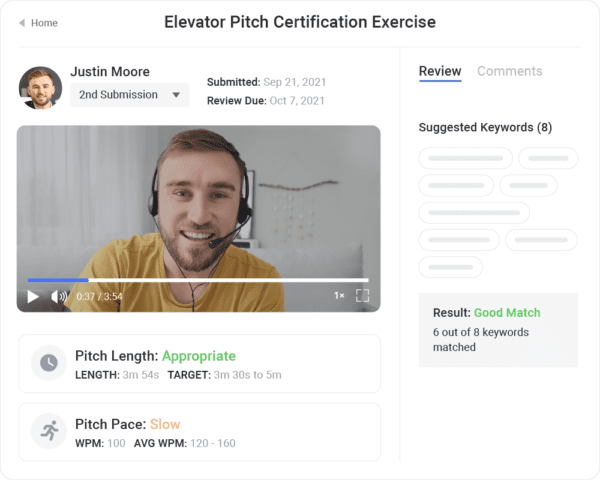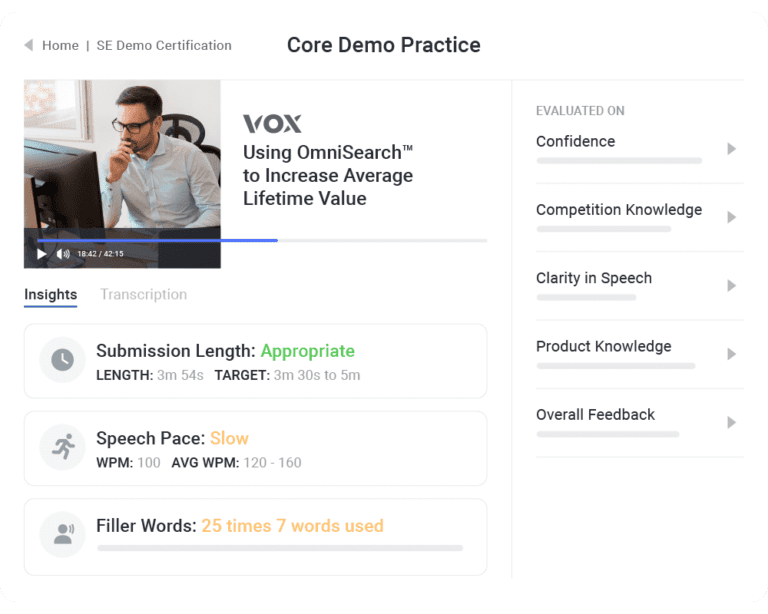Some think great sellers are born, but more often than not, they’re made through virtual sales training, teaching, practice, and support.
Considering that most selling is done virtually today, and that buyer journeys are becoming more complex, it’s never been more important for salespeople to refine their skills in order to effectively engage prospects and customers.
What is virtual sales training?
An essential part of virtual sales training is keeping the learner engaged by making training more consumable. Virtual sales training requires a completely different approach than classroom learning because it comes with its own different set of distractions and tactics for being effective. Below you’ll find some of the essential skills and knowledge to incorporate into your virtual sales training program.
Below we outline 10 skills your sales team can develop with help from a virtual sales training platform.
Top skills for virtual selling success
Discovery
To have any hope of making a sale, a seller must be able to find accounts and buyers that fit your target customer base and ask insightful questions in order to provide relevant and meaningful outreach and content.
Uncovering a prospect’s pain points, priorities, objectives, and buying team dynamics during discovery sales calls is crucial for continued engagement as the prospect moves further down the funnel. Have top-performing reps share best practices for discovery with others on the team to help everyone hone this skill.
Time management
In a perfect world, salespeople could devote 100% of their time to sales activities: sending emails, making sales calls, closing deals.
But today’s selling experience is complex, requiring a lot of tasks that are seemingly minor but in fact, largely contribute to a deal’s success. For this reason, reps must be able to juggle it all, prioritizing the highest-value items on their to-do lists and responding to buyer requests in a timely manner.
One-on-one coaching sessions between manager and seller are useful for finding ways the rep can manage their time and maximize productivity.
Technology use
Numerous sales tools have been introduced to automate, streamline, and/or measure sellers’ daily activities. Whether it’s a content management system, conversation intelligence, or a revenue productivity platform, reps must be able to use technology effectively. It’s up to IT, sales, and sales enablement leadership to ensure salespeople are adequately trained on these systems.

Relationship building
Regardless of what territory a seller has and the type of prospect they’re working with, developing authentic relationships with buyers is critical.
Executives and other business leaders are flooded with sales calls and emails on a daily basis and won’t give the time of day to a vendor who doesn’t care to hear their feelings and opinions.
Your reps can engage more meaningfully by forming and nurturing connections. The ability to do this can be passed from the top down; if sales leaders and managers are empathetic to their teams, reps will replicate this behavior with their prospects.
Effective communication
Written and verbal communication skills are not just important for interacting with buyers; they’re also required for impactful internal relationships, whether between members of the same team, between manager and rep, or with colleagues from other departments.
To be successful in sales, reps must be assertive while mastering tone and delivery of the information they’re delivering. Encourage reps to practice different messaging formats and techniques, share ideas, and provide feedback with one another.


Storytelling
Shaping messaging into a compelling tale is a distinct skill that goes beyond knowing how to communicate effectively. Telling an authentic story to demonstrate how other customers have solved business issues with your solution appeals to emotions and stokes action. As with other important sales competencies, crafting persuasive narratives takes practice, so give salespeople plenty of opportunity to do just that within coaching sessions and team meetings.
Product knowledge
Today’s buyers have high expectations and can see through salespeople who pretend to know what they’re talking about.
Rather than memorizing a minute-long product pitch, having extensive product knowledge allows sellers to share the value of products more creatively and meaningfully. It also enables reps to answer nuanced questions buyers have about features and functionality. Provide plentiful virtual sales training materials surrounding your product suite and walk your sales team through product demos so they know the ins and outs of what they’re selling.


Active listening
It bears repeating: Generic pitches and presentations don’t work with buyers today. Sales reps must demonstrate the value of their solutions differently based on a buyers’ unique use cases. And the only way to do that is by letting them tell you what those use cases are. Sellers must ask about goals, roadblocks, priorities — anything that gets them to the heart of what that buyer needs — and then stop and listen.
Active listening means staying in the present, taking in what the person is saying, and waiting until they’re finished to respond. By doing so, a rep builds further connection with that buyer and begins to position him or herself as a trusted advisor.
Negotiation
Once a proposal has been put together, sales reps must be able to command the subsequent negotiation process. This means not giving in to a prospect’s every demand and instead being assertive and presenting alternative solutions that benefit both parties. Train sellers on how to manage negotiations and give them the opportunity to practice with their peers.
Objection handling
It’s rare a buying team will accept everything a seller tells them without question. Rather than taking their challenges as obstacles, reps should take these as opportunities to get more visibility into how the buyers think. Ensure your salespeople are able to respond to common skepticism and objections with recorded role-plays scored by either AI or managers.
Sales Training in Mindtickle
Help your sales team master these skills and more with effective virtual sales training.
Request a Demo
This post was originally published in October 2022 and updated in October 2023.







